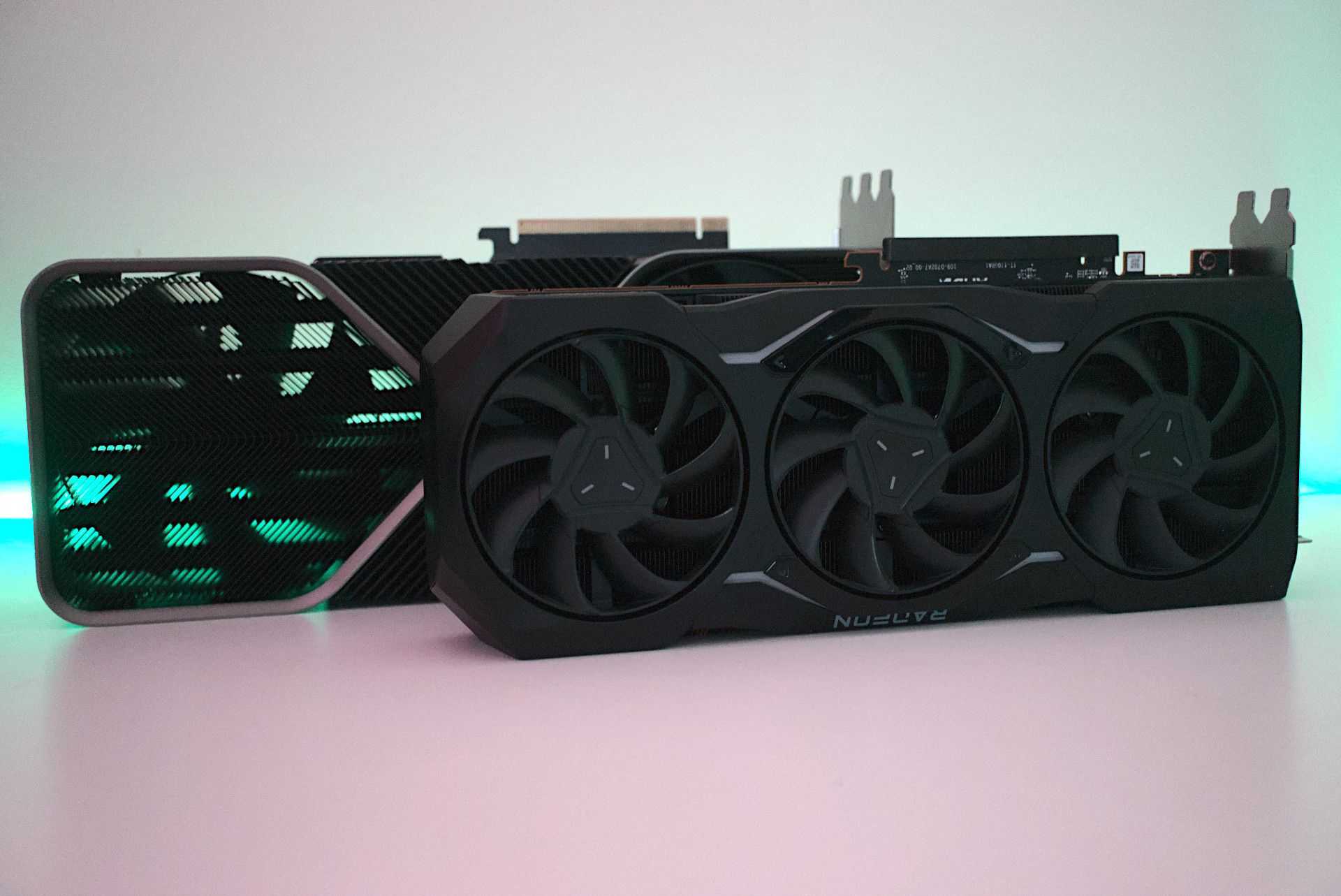A graphics card is arguably one of the most important components of a gaming PC. But just like most PC parts, there's no single GPU that works for everyone. While some users may want the ultimate gaming experience on PC, others may want to sacrifice power to find great value. Many might just need one of the best budget graphics cards for a casual 1080p gaming experience.
Although the market is certainly in a better state than it was in 2020 or 2021, things aren't really great, especially for gamers on a budget. AMD still hasn't replaced its RX 6000 series (the cheapest members of which have major issues), Nvidia doesn't sell new cards below $250, and Intel's brand-new GPUs are solid but held back by buggy drivers. Even big spenders might balk a bit at the price of the latest high-end GPUs from AMD and Nvidia. Still, some GPUs are better than others, and a few are just good in their own right. Here are my current recommendations for what graphics cards are worth your money in 2023.
These are the best GPUs for gaming in 2023
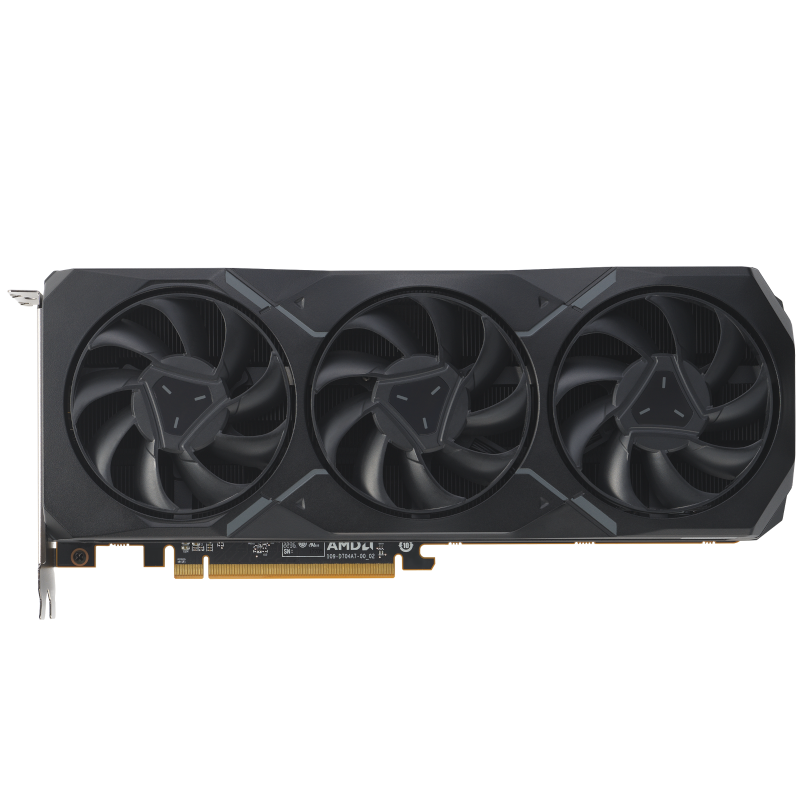
AMD Radeon RX 7900 XT
It's not perfect, but still the best overall
The AMD Radeon RX 7900 XT is one of the best GPUs released by AMD this year. It's well suited for 1440p and 4K gaming with ample performance at a more reasonable price.
- Great bang for buck
- A ton of memory at 20GB
- Modern features like AV1 encoding
- FSR not quite as good as DLSS
- Ray tracing performance worse than comparable Nvidia GPUs
When it originally launched in late 2022, the RX 7900 XT was nothing special. It was a $900 GPU that was only about as fast as the $800 RTX 4070 Ti, our previous best overall pick. However, in the months since the 7900 XT launched, its price has come down steadily, with some models going for less than $800. It's not just more appealing than it was before but now stands as one of the best cards you can buy for a high-end PC.
The 7900 XT is AMD's second-fastest GPU in the 7000 series and is basically a slightly cut-down 7900 XTX, the flagship. It comes with 84 Compute Units (or CUs), 80MB of Infinity Cache, and 20GB of GDDR6 memory; for reference, the 7900 XTX (the fully unlocked card) has 96 CUs, 96MB of Infinity Cache, and 24GB of VRAM.
The performance of the 7900 XT hasn't changed since launch. It's still about equivalent to the 4070 Ti, which tends to retail for a little over $800. The reason why the 7900 XT gets our recommendation despite not having better AI upscaling technology or ray tracing performance is because of the VRAM. The 4070 Ti only has 12GB of GDDR6, which is quite a small amount for a GPU that's supposed to be used for 4K gaming. In modern titles, 12GB seems to be enough for the 4070 Ti, but a year or two from now, it might be a different story.
Of course, at around $800, the 7900 XT is still pretty expensive. I really like its modern features, performance, and large amount of VRAM, and strongly recommend it if you can afford it. If not, then I recommend one of the cards I've selected for 1440p and 1080p gaming, which will still have great features at much lower prices.
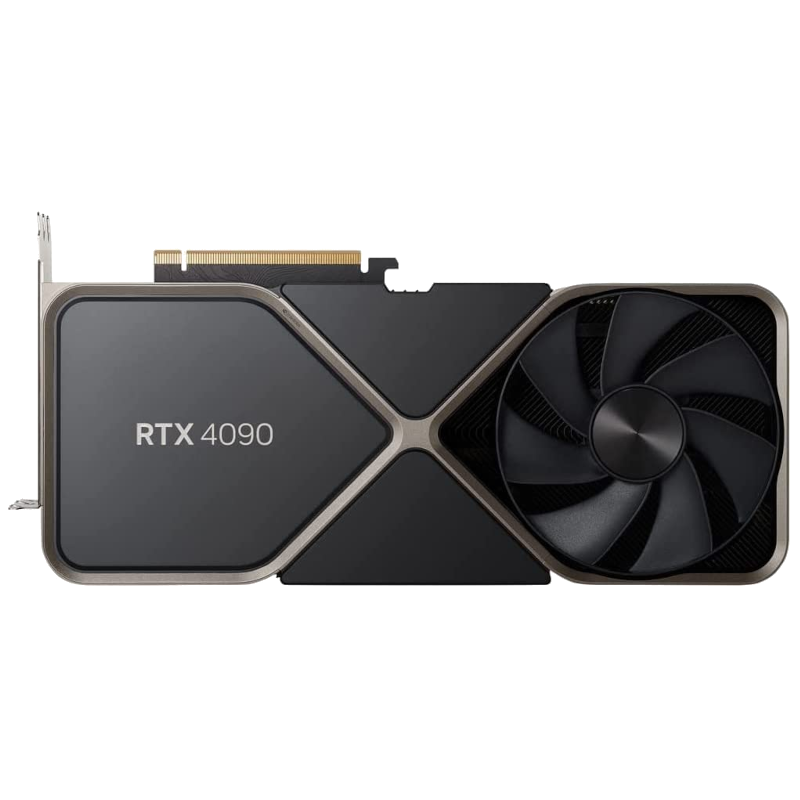
Nvidia GeForce RTX 4090
A ridiculously fast GPU at a ridiculous price
The undisputed heavyweight champion of consumer graphics cards, nothing else comes close to the Nvidia GeForce RTX 4090 in performance or price.
- Truly next-generation performance
- Good amount of VRAM
- Nvidia features like DLSS
- Costs as much as an entire PC (or even two)
- Physically large
- High power draw
The Nvidia GeForce RTX 4090 is the most powerful consumer graphics card money can buy. It represents the best of what Nvidia has to offer, and it easily topples everything else on the market regarding raw performance. The chances are that you really don’t need one of these, but on the other hand, if you can afford it, then why not?
The 4090 is built on Nvidia’s new Ada Lovelace architecture and houses the colossal AD102 GPU with 16,382 Cuda cores and 24GB GDDR6X VRAM. It’s rated at 450W TGP, so it’s thirsty and uses the new 12VHPWR power connector. Nvidia includes a very necessary, but unfortunate, adapter in the box to use with your existing power supply. You’ll need a minimum 850W power supply, though we’d recommend at least 1000W to give yourself some headroom, and having a good PC case with lots of airflow is also recommended.
The 4090 is great at gaming thanks to its raw horsepower and access to Nvidia features like DLSS, but also makes sense for content creators. It’s the first Nvidia GPU to come with a hardware AV1 encoder, though the NVENC encoder is no slouch either. For example, using the RTX 4090 with DaVinci Resolve, we encoded a 4K60 video that's 4 minutes and 30 seconds long at 40,000 bitrate using NVENC in just 96 seconds.
With an MSRP of $1,600, the RTX 4090 costs as much as a high-end PC. It's a great product for those who can afford it, however, and is clearly faster than AMD's competing RX 7900 XTX (which is much cheaper, though). If you're a serious enthusiast or even make a living as a content creator, the 4090 should be up your alley.
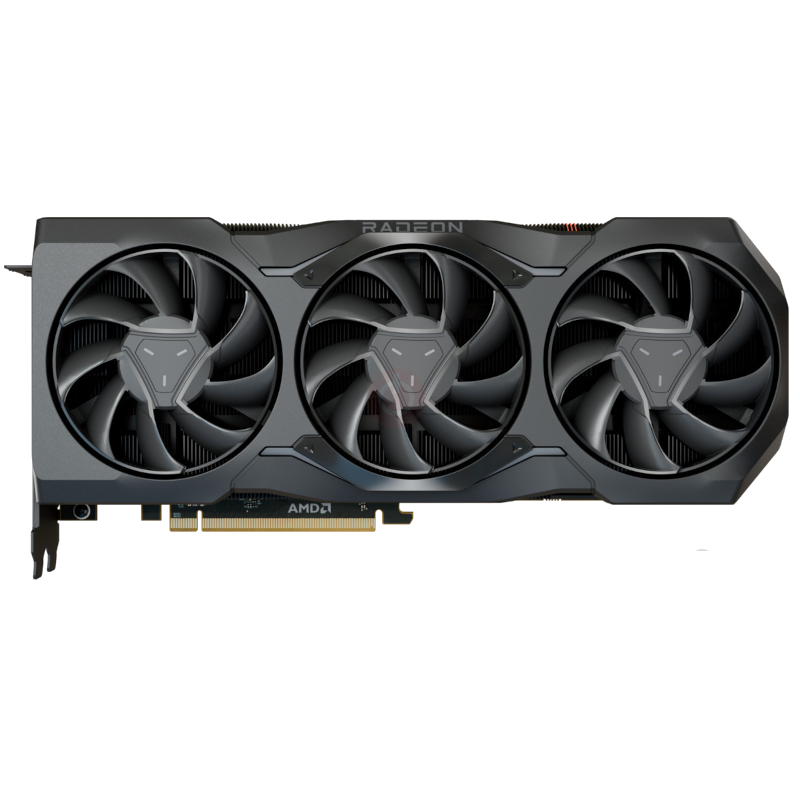
AMD Radeon RX 7900 XTX
The card to buy for the best 4K gaming experience
The RX 7900 XTX is Radeon's latest flagship graphics card, offering considerable gains across multiple resolutions over the older RX 6000 generation of GPUs.
- Much cheaper than RTX 40 cards with comparable performance
- 24GB of GDDR6 VRAM
- AMD software and features are almost as good as Nvidia's
- $1,000 is a big investment for a GPU
- FSR isn't quite as good as DLSS
- Not as efficient as competing Nvidia cards
4K gaming requires two things: lots of raw power and lots of memory. Of course, you could just get an RTX 4090 since it's the best graphics card for both of those things, but another GPU performs almost as well for $600 less: AMD's RX 7900 XTX. It's the company's flagship graphics card and delivers the 4K gaming experience you want.
Today, the 7900 XTX is the fastest GPU AMD can make. It has 96 CUs, 96MB of Infinity Cache, and 24GB of GDDR6. That's the same amount of VRAM as the RTX 4090, and if you're gaming at 4K, you want as much VRAM as possible. It also has significantly more VRAM than other RTX 40 cards down the product stack, such as the 16GB that comes with the 4080 and the 12GB on the 4070 Ti.
In 1440p and 4K gaming, the 7900 XTX effectively has the same amount of performance as the 4080, which is generally seen as the 7900 XTX's main competitor. However, the 7900 XTX gets our ultimate recommendation because of its larger VRAM and lower price tag. 16GB is certainly sufficient for 4K gaming today and probably will be in the future, but for 4K gaming you're going to want better than "sufficient." There's also the argument for DLSS being better than FSR, but both the 7900 XTX and 4080 are capable of 4K gaming without the need for upscaling technologies.
As a 4K gaming GPU, the RX 7900 XTX is the one with the most reasonable compromises. It has great performance, tons of VRAM, and an acceptable price. It's not the only good option for 4K gaming, but it's probably the best for the average user.
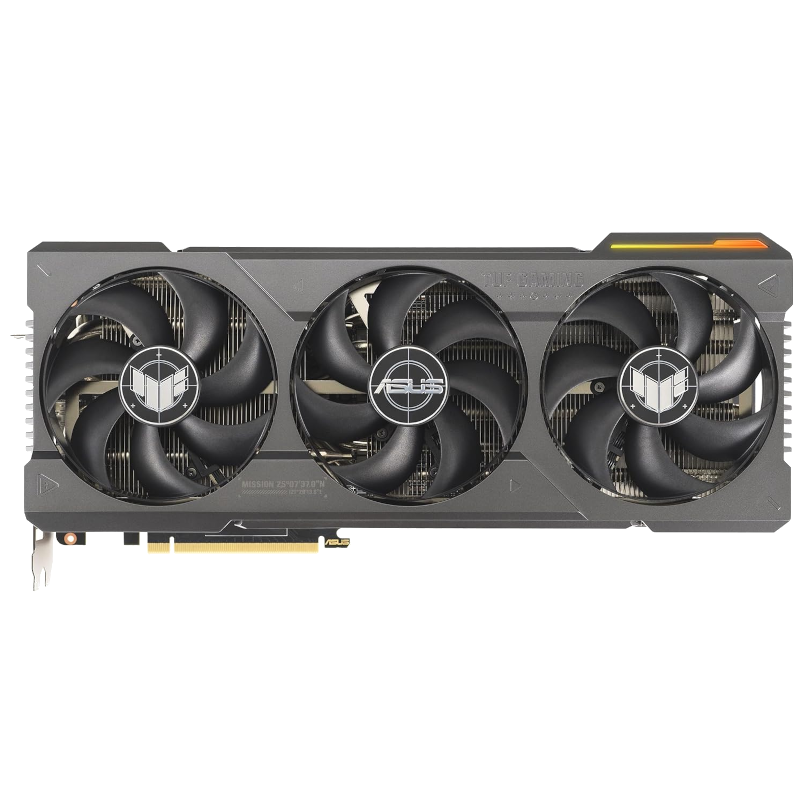
ASUS TUF Gaming RTX 4080 SUPER OC
For gamers interested in ray tracing
The Asus TUF Gaming RTX 4080 Super OC is a solid 4K graphics card. It doesn't have the flashiest design, nor will it win awards for the best-performing GPU available, but it offers good gaming performance for a mid-range card. 4K is no problem at all.
- Great performance
- 16GB of GDDR6X VRAM
- DLSS and good ray tracing performance
- Very expensive
- Less VRAM than the 7900 XT and 7900 XTX
The RTX 4080 Super is an appealing alternative to the RX 7900 XTX if you plan on using ray tracing and other graphically intensive settings. Nvidia was the first company to ray tracing and still has a significant advantage, and the 4080 Super's better ray tracing performance and DLSS's superior image quality versus FSR make it a better card for users who want to enable them.
With 10,240 Cuda cores and 16GB of GDDR6X, the 4080 Super is significantly smaller than the RTX 4090; in fact, it's based on a different piece of silicon that's quite a bit smaller than the chip used in the 4090. Nevertheless, it's still a top-end GPU with support for DLSS 3, which introduces frame generation to the resolution upscaling technology. DLSS 3 can increase the framerate by up to 100% in games that support it, though the catch is that these frames are often of lower quality than actually rendered frames and increase latency.
In this day and age, even 60 FPS is low for a high-end build, but turning on the most graphically intensive settings like 4K resolution and ray tracing can easily bring a top-end card like the 4080 Super or 7900 XTX down to less than 60 FPS. Nvidia and AMD both have resolution upscale features called DLSS and FSR, respectively, and you want to use them if your framerate is low otherwise. However, DLSS generally has better visual quality than FSR, so the 4080 Super is probably the better choice if you plan on ray tracing at 4K or doing other intensive tasks like video editing.
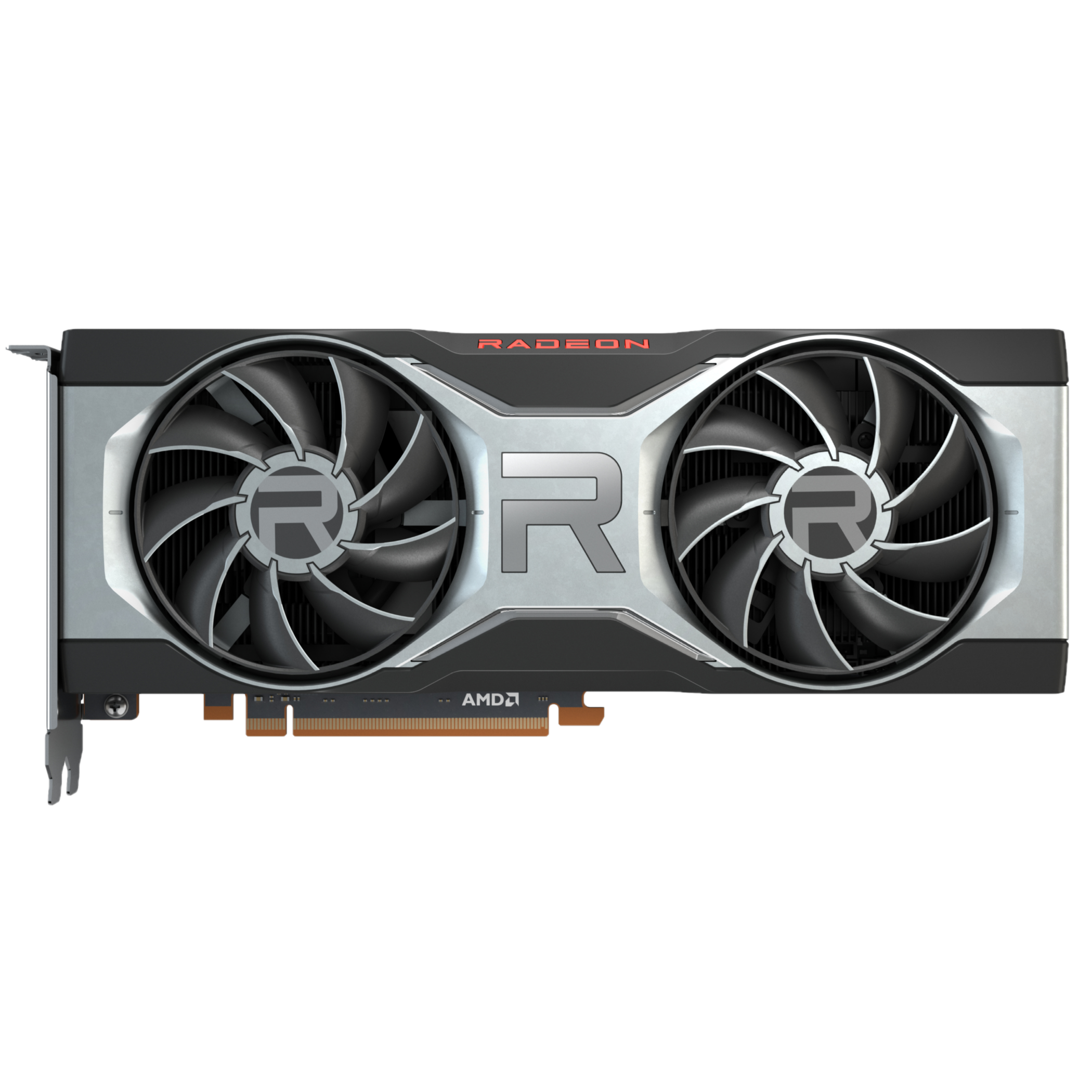
AMD Radeon RX 6700 XT
When you don't mind a couple of compromises
AMD's Radeon RX 6700 XT is a midrange gaming GPU that performs well at 1080p and 1440p for less than $400. It's positioned against Nvidia's RTX 3060, 3060 Ti, and 3070 for price and performance, and is generally the better option for raw performance.
- Can game at 1440p without having to compromise on visual quality
- Has almost as much value as the cheaper RX 6600 XT
- 12GB of GDDR6 VRAM
- Not always available
- Getting old
You could just get the RTX 4090 or the RX 7900 XTX and call it the best for 1440p gaming, but even lower-end GPUs these days can do 60FPS or more at 1440p. With that in mind, I recommend AMD's Radeon RX 6700 XT for 1440p gaming thanks to its relatively low price of just under $400 and its performance, which is right between that of the RTX 3060 Ti and the RTX 3070. Those two Nvidia GPUs, however, cost significantly more than the 6700 XT.
The 6700 XT is AMD's midrange RX 6000 series GPU, with 40 Compute Units (or CUs), exactly half of the 6900 XT's 80 CUs. More important is the 6700 XT's 12GB of GDDR6, which is quite a bit for a more midrange card like the 6700 XT. You'll never have to worry about running out of VRAM at 1440p or even 4K, since, at that point, the GPU itself is more likely to be the bottleneck.
The RTX 4060 is the primary competition of the 6700 XT, and while it is a little cheaper at $30, it's also about 10% slower and only has 8GB of VRAM. The 4060 somewhat makes up for it with DLSS and better ray tracing performance, but the 6700 XT has FSR, and neither of these cards is really suitable for ray tracing anyway.
There's also the refreshed version of the 6700 XT, called the RX 6750 XT, but you should avoid it. The 6750 XT is only a little faster but goes for around $400 or a little less, which means it doesn't make much sense as an alternative as long as the 6700 XT is significantly cheaper. The RX 6700 is another option, and it's basically a cheaper 6700 XT with 10GB of VRAM and about 80% to 90% of the performance. However, the 6700 XT generally has the best bang for buck compared to its siblings.
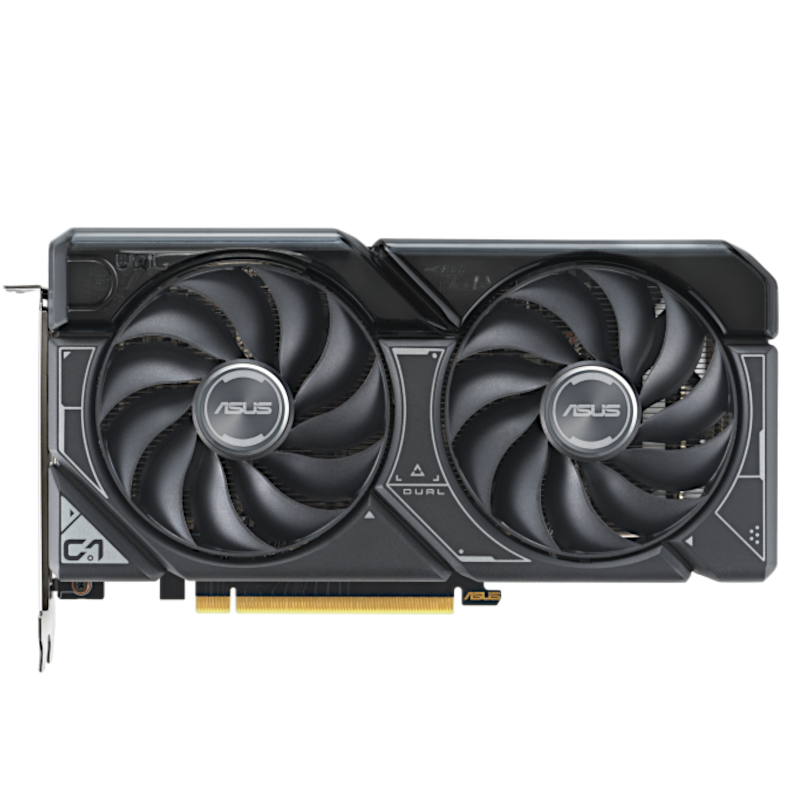
Asus Dual GeForce RTX 4060
Nvidia finally returns to the midrange
The RTX 4060 Dual is Nvidia's most affordable and efficient RTX 40 GPU, coming in at the $300 mark. This model from Asus is a great option thanks to its compact size.
- Relatively affordable
- Great for 1080p and 1440p
- Very efficient
- 8GB of VRAM isn't amazing
- Worse value than competing AMD cards
For a couple of years, Nvidia just wasn't a great option below the $500 price point; 30 series cards like the 3060 just would not come down to MSRP even after the GPU shortage had ended, while AMD's competing cards are still declining in price even in 2023. But with the launch of the RTX 4060, Nvidia has a $300 GPU with a decent amount of performance behind it. The 4060 isn't amazing, but at least it exists.
On paper, the 4060 looks like a downgrade of the 3060. It only has 8GB of VRAM versus the 12GB on the 3060, it has 3,072 CUDA cores against the 3060's 3,584, and its memory bandwidth is just 272GB/s when the 3060 has 360GB/s. Despite all this, the 4060 is about 10% to 20% faster than the 3060 on average, largely thanks to the 4060 having a much, much higher clock speed.
There are quite a few cards from AMD that compete with the 4060, such as the brand-new RX 7600, the 6700 XT, and the 6650 XT. The 4060 loses to pretty much all of these cards in a standard bang-for-buck comparison, but superior power efficiency, DLSS, and other Nvidia features can help make up for it. The 4060 isn't an obvious GPU to get for 1440p, but it's a good option.
The 4060 is Nvidia's best card in this price region, even against the older 3060 and 3060 Ti which tend to cost $300 or more. While the 4060 did push prices down on these lower-end 30 series cards, it didn't push them down nearly enough for the 3060 and 3060 Ti to be realistic alternatives to the 4060. There's also the 4060 Ti, which costs $100 more and is only about 20% faster. The 4060 is definitely Nvidia's best-value card at the moment.
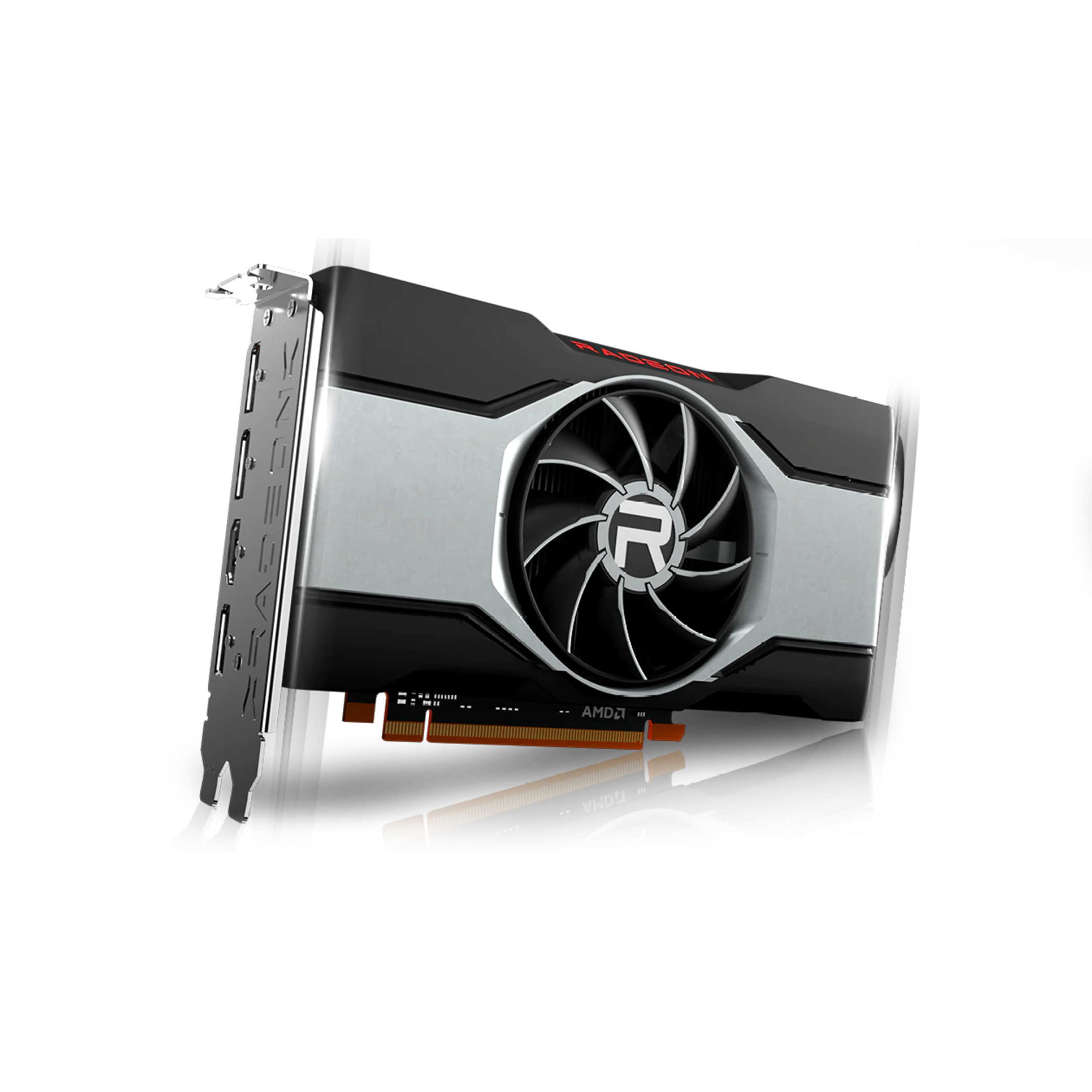
AMD Radeon RX 6600
Expensive for entry-level builds, but still a good deal
The AMD Radeon RX 6600 is a budget graphics card geared towards 1080p gamers. It's a solid option to consider for those who're looking to enjoy 1080p gaming without spending too much money on high-end cards.
- Great bang for your buck
- 8GB of GDDR6 VRAM
- Low profile design
- Supply can be poor at times
- Getting old
What "entry-level" means these days is very different from what it meant a few years ago. It used to imply $100 or so you could play titles like Skyrim without spending too much money. Well, things have changed since then, and newer GPUs cost more while older GPUs are going out of stock. The cheapest GPU worth your money is, realistically, the RX 6600, which costs around $220 and can even be found for as low as $200.
It's not AMD's cheapest GPU, as the RX 6400 and RX 6500 XT can be found in the $150-$200 region, but these GPUs are not acceptable for low-end and older PCs because they require PCIe 4.0 for optimal performance. The RX 6600, on the other hand, performs totally fine at PCIe 3.0 and has performance comparable to the RTX 3060, or about twice the performance of the 6500 XT. At least you get what you pay for.
The 6600 has support for ray tracing, but it's not really fast enough for a smooth gaming experience with that feature enabled, even at 1080p. You're more likely to use FSR in titles that support it. FSR works like DLSS and renders a game at a lower resolution and upscales it. FSR 2 isn't perfect, but it's generally considered to be almost as good as DLSS 2.
Alternatively, you can try the RX 6400 or RX 6500 XT, but the performance per dollar is poor, especially if your PC doesn't have PCIe 4.0. There's also the RX 6650 XT and RX 7600, which tend to retail closer to $250 to $300. I really wish there was an option from Nvidia, but the company hasn't launched a real GPU below the $250 point since 2019, and all the GPUs from that time period simply aren't in good supply anymore.
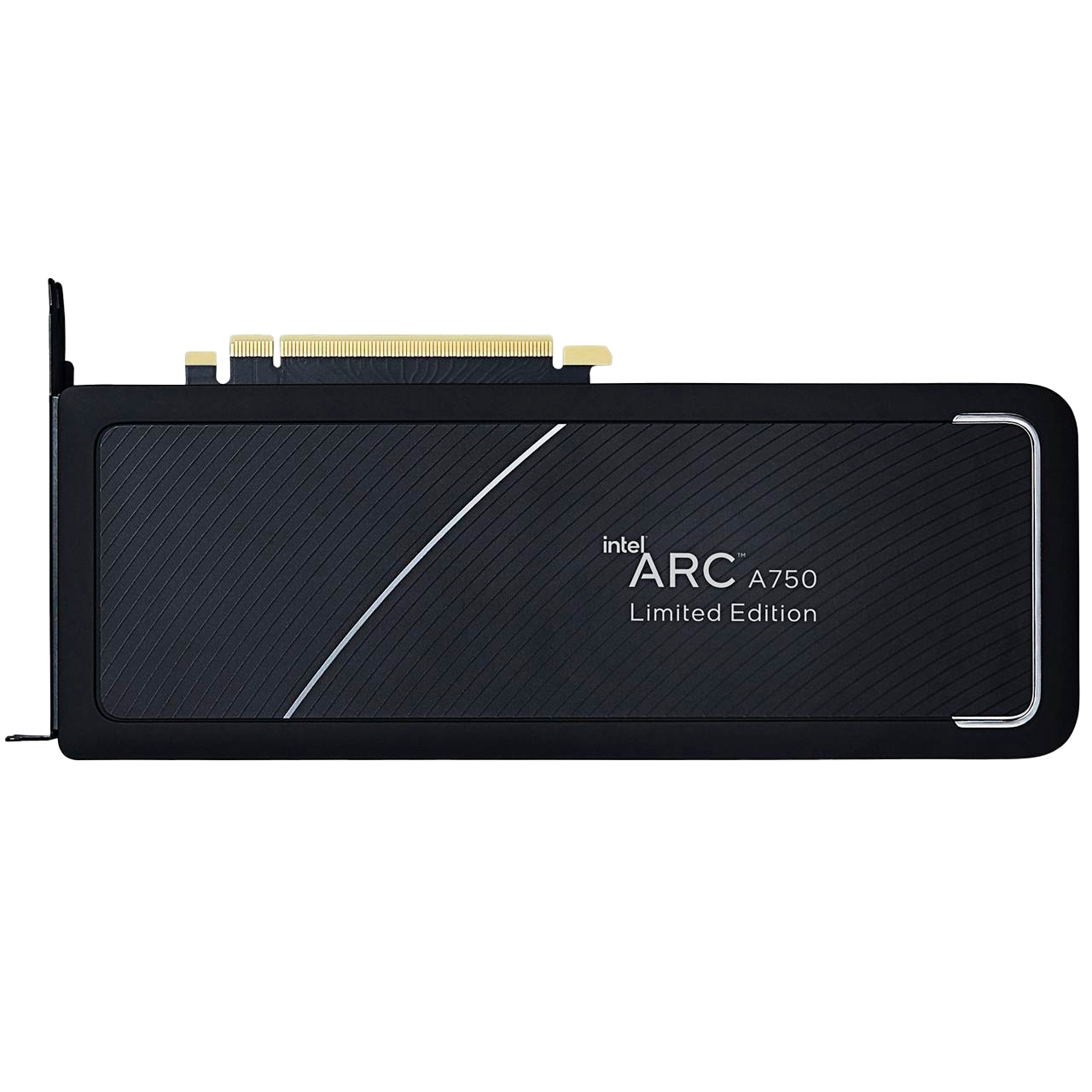
Intel Arc A750 Limited Edition
A great value card let down by software
Intel's Arc A750 graphics card is a strong contender at the midrange thanks to its $250 price tag and decent performance. It's 90% of the A770 for much less and competes against the more expensive RX 6600 XT and RTX 3060.
- Great performance for the price
- AV1 encoding
- XeSS and ray tracing support
- Drivers are immature and buggy at times
Although it's been less than a year since Intel launched its very first gaming GPUs at retail, it feels like the company's Arc series has settled into the market pretty well. Between big improvements in software and price adjustments, Intel's Arc Alchemist GPUs are actually pretty easy to recommend today. In particular, I recommend the Arc A750, a potent midrange GPU that normally goes for $250 but has been on sale for even less.
The A750 isn't designed to take on the best from Nvidia or AMD. It's firmly a midrange GPU but one that also packs a raft of modern features, including ray tracing, XeSS (Intel's version of DLSS and FSR), and AV1 encoding. The A750 is perfectly capable of high frame rate gaming at both 1080p and 1440p, matching the RTX 3060 and RX 6600 XT in most titles. There are some drawbacks, such as its lack of hardware support for DX9 and inconsistent performance in DX11 games, but at $250 it's undercutting both Nvidia and AMD by $50 or more.
There is the faster A770, but I really don't recommend it since it's only about 10% faster and costs about $100 more. The extra 8GB of VRAM on the A770 may be useful for some, but generally, it isn't worth the premium. The A770 used to make sense when it was only $60 more than the A750, but now that Intel has cut the price on the A750, it's the best GPU in the Arc Alchemist series.
Nvidia vs AMD vs Intel: which is best for gaming?
Determining which brand is the best for gaming has been a thing since before many PC gamers were even born, and since technology is a moving target, there won't ever be one answer to this question. But even without considering what's in store for us in future generations, it's hard to say which brand is better overall when Intel, AMD, and Nvidia all offer very different GPUs with different strengths and weaknesses.
Intel is not for everyone
Considering that Intel is a newcomer to gaming GPUs (the first in over two decades) and only has three cards available, it's safe to say Intel will probably appeal to the least amount of people. However, that's not to say there's no reason to buy one of Intel's Arc Alchemist GPUs. The A750 is a great bang-for-buck card with modern features for gaming, and most of its driver-related performance problems have been or are soon to be resolved. The cheap A380 and more expensive A770 don't deliver as much value, however.
AMD is the best for value
AMD is probably the brand that's best for most people at the time of writing. Its older RX 6000 series goes from $150 to $700 and offers a better value than Nvidia's RTX 30 series, which hasn't been fully replaced by RTX 40 thus far. Although we've recommended both the 7900 XT and 7900 XTX, they're not clear winners against the higher-end RTX 40 series cards; in fact, the 7900 XT had to fall in price by $100 in order to become a better deal than the 4070 Ti.
Nvidia is the best for performance
Although Nvidia is by far the most popular brand for gaming GPUs, its cards suffer from a high price issue. At the time of writing, Nvidia's cheapest RTX 40 card is the $300 RTX 4060, which is still pretty high for a single GPU. Nvidia used to make GPUs that started at $100 or a little more, but those days are far behind us. The RTX 40 series itself also has quite a bit of competition from the RX 7000 series and even high-end RX 6000 series cards. However, the RTX 4090 is indisputably the fastest gaming GPU, period.
Which brand is best for you will come down to your specific needs. If you want a great value midrange GPU that also has content creation potential, Intel is probably the best. If you simply want a good value graphics card at any performance level, AMD is a good choice. If you want the best feature set, good ray tracing performance, and perhaps even the best performance period, then Nvidia can do that better than both Intel and AMD (albeit at unimpressive price points).
Best graphics card for gaming in 2023: Final thoughts
For the PC gamer with about $800 to spend on a GPU, the RX 7900 XT is the best card available. It has great performance, lots of VRAM, and modern features like FSR resolution upscaling and AV1 encoding. For 4K gaming, the RX 7900 XTX and RTX 4080 are equally good choices. The RX 6700 XT is the best 1440p gaming GPU by far thanks to its low price and good performance, though the RTX 4060 isn't a bad choice either. At 1080p, you're best off with either the RX 6600 or Arc A750. And if you have money to burn and need the best of the best, get the RTX 4090.

AMD Radeon RX 7900 XT
The AMD Radeon RX 7900 XT is one of the best GPUs released by AMD this year. It's well suited for 1440p and 4K gaming with ample performance at a more reasonable price.

